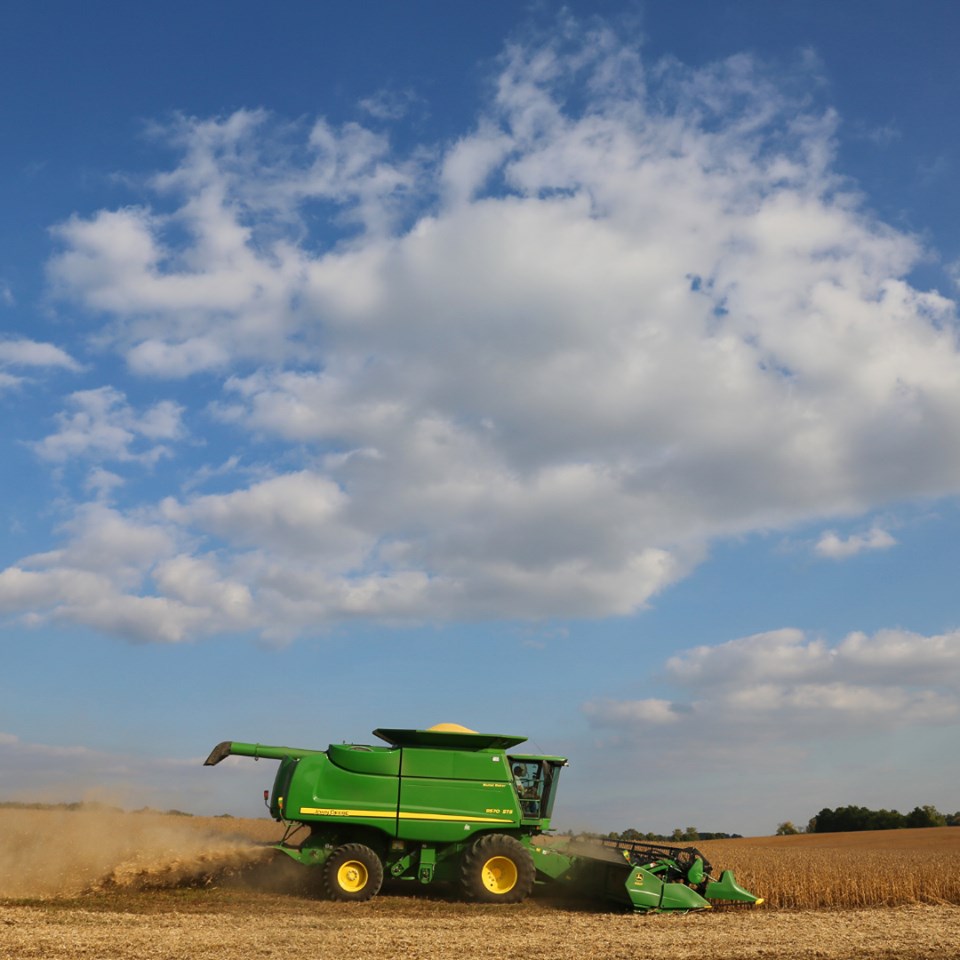Drive Safely During Harvest Season
Anyone that lives in a rural community has either been involved in or knows someone who has been involved in an accident with farm equipment. People in cars usually lose those incidents, but the operator of the equipment can be injured, too.
Most people know to be patient and just wait for the farm equipment to reach their destination. Tractors and combines aren't usually driven for miles on roads, so it won't be long before they turn off the highway into a field or farm.
Most farmers report that they have close calls (or worse) with impatient drivers weekly. Driving at 25 mph isn't fun for anyone, but totaling your car, ending up in the hospital, or injuring others is even worse.
 Harvest Time Calls for Caution
Harvest Time Calls for Caution
The harvest window will be bigger than usual this year as farmers weren't all able to get their crops planted at the same time. Harvest times will vary depending on many variables, so drivers will have to be cautious for a longer time.
Farmers will be on the road with combines, grain carts, semis, and other farm equipment as they harvest their soybeans and corn. They will be sharing the road with people trying to get to work, appointments, and other destinations. Throw in the random road construction and people can become impatient quickly.
The Illinois Department of Transportation (IDOT) reported that in 2014 there were over 200 accidents involving farm equipment on Illinois roads. Of those events, 57 people were injured and five died. They didn't have an estimate of the dollar amount that these incidents cost, but it can be safely assumed that it was costly.
SMVs and Safety
In rural areas, you will come across farm equipment almost year-round, but during planting and harvest season, there will be a larger number of vehicles on the road. These big pieces of equipment don't start, stop, or handle easily and usually move at a much slower speed than the rest of the traffic. Most have a safe top speed of 25 mph.
Cars on highways or country roads may be running at 60 mph and quickly come upon a Slow Moving Vehicle (SMV) going 25. Many accidents involve cars rear-ending farm equipment. When going uphill, you should assume there is on the other side of the hill that you can't see. A combine coming through your windshield is not going to end well for anyone.
Just like when following a semi on the interstate, don't tailgate farm equipment. The driver is probably not going to be able to see you. If you have to pass, wait until you are on a flat stretch of road with a clear view of any oncoming traffic.
Also, like semis, a piece of farm equipment may veer right before making a left turn. This allows the driver to have enough room to turn. Wait a moment to see if they are turning or pulling over to let you by.
Farm Equipment Safety Equipment
All farm equipment should have the SMV orange triangle on the back of the machine. Additionally, flashing amber hazard lights should be visible from the rear, along with sidelights, so other drivers know how wide the piece of equipment is. Most farmers don't want to be on the road any more than they have to and will usually pull onto the shoulder when it is safe to do so. Watch the driver, the machine, and the surrounding traffic for signals that it is safe to pass the slow-moving vehicle.
A little patience now can help save you time, money, injuries, or worse in the long run. Give yourself time to be patient if you get behind farm equipment this harvest season.










